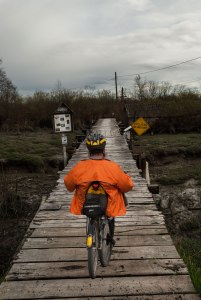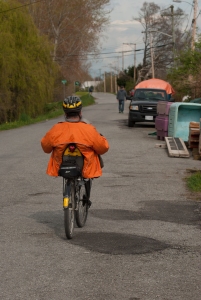Read the section entitled ‘The real and the Digital’ in Wells, Liz. (2009) Photography: A Critical Introduction (4th edition). Abingdon: Routledge, pp. 73 – 75.
Does digital technology change how we see photography as truth? Consider both sides of the argument and make some notes in your learning log.
Photography from its inception has always involved manipulation of sorts, whether it is by excluding something from the frame, changing the angle of point of view, dodging and burning in the wet darkroom, double exposures, layering negatives on top of each other to create a print or applying enhancements in Photoshop as can be seen in this article by the New York Daily News and in Photo Tampering throughout History.
Truth is defined in the Oxford Advanced Learner’s Dictionary as ‘the true facts about something, rather than the things that have been invented or guessed; the quality or state of being based on fact‘.
Martin Lister states in Photography: A Critical Introduction (p. 316) that a deep concern about the value of photographic truth developed in the 1990’s when the first digital cameras came on to the market. Some of the issues that arose revolved around the differences between chemical and digital photography and the simulation of photographic images by computer generated images. Fred Ritchen, professor at New York University, argued that there would be a radical increase in the manipulation of photographic images with the advent of the digital camera. I think this has proven to be true as more hobbyists have access to software such as Photoshop, Gimp and not to mention the hundreds of apps that are out there like Instagram. But has this affected the way we see the truth?
I believe it has. The general public has become very aware of photographic manipulation thanks to the fashion industry where models’ cellulite, fine lines and moles are cloned away or airbrushed, their bodies are liquified to make them slimmer. Such perfection really does not exist in real life, so in a sense we almost expect the manipulation when we look at fashion photography. What is a little more difficult for the public to discern are the manipulated documentary, reportage and photojournalistic images. This is where we encounter ethical lines.
But first we should differentiate between ‘processing’ and ‘manipulation’. According to David Campbell (1) every digital image ever made has been processed. A RAW file consists solely of data: 1’s and 0’s. In order to be able to ‘see’ the data the file has to be processed (and this occurs in camera) and we then see the image on the back of our camera in JPEG format, and we haven’t even come close to a computer or Photoshop software yet. This type of processing is acceptable and obviously very necessary.
Manipulation, however, involves the moving of pixels i.e. cloning out the pole behind someone’s head, duplicating portions of an image to cover something up, substituting something from another photo in order to create a better composition and so on. It is here where ethics come into play. Just how far should documentary and journalist photographers be allowed to go in processing their images in the digital darkroom? How far can they push the limits before public trust is lost? Various agencies have set up boundary guidelines regarding these issues: the National Press Photographers Association’s Code of Ethics, which I referenced in detail in my Eyewitnesses posting, Associated Press, Reuter’s, World Press Photo, Getty Images – details of which can be seen in the Processing the News: Retouching in Photojournalism article.
But as Derrick Price (2) states:
Roland Barthes’ influential conception of the nature of the photograph, is that it is the result of an event in the world, evidence of the passing of a moment of time that once was and is no more, which left a kind of trace of the event on the photograph.
Photography: A Critical Introduction (p. 74)
It is this trace that creates the connection to the ‘real’. These photographs act as indexical signs (signs which can be inferred). It is these signs that subconsciously translate the image world for us. If there is a radical change in the photograph by means of manipulation, the viewer will be distrustful, or wary.
I think this explains the reaction I had when viewing Angela Grossman’s Models of Resistance exhibition. Her body of work was a series of collages depicting gender identity. Clearly this type of work is not meant to be documentary, but falls totally into the ‘art’ category. Obviously a distortion of the truth was taking place, but because the images fell into this category, I really didn’t care whether they were truthful or not. If we apply the Oxford Advanced Learner’s definition of truth as stated above to this body of work, it is clear that it is ‘invented’.
Technology has progressed so far that images can be totally created from scratch on a computer and are really quite hard to distinguish with the naked eye from a real photograph, if possible, making the distinction between the ‘real’ and the ‘digital’ even more difficult. The borders between photography and digital art have become very blurred indeed. Personally I don’t regard computer generated digital art as photography. I think for me the deciding criteria is that the shutter button has to be pressed and a viewfinder has to be involved somewhere in the process. A photo collage or montage would be an example of this. In the making of a collage or montage the shutter would have been pressed at least once in the making of the composite, most probably during the making of a photograph which was used in the actual collage or montage.
Technology is always changing and who knows how photographs will be made in fifty or one hundred years time. Whatever new method evolves, I believe we will still be asking the same question and coming up with similar answers because at the end of the day truth is not an absolute concrete concept even though we would like it to be. It is subjective, fluid, depending on one’s stance, point of view, cultural background and beliefs.
Reference List
(1) Alexander, Scott (2014). Processing the News: Retouching in Photojournalism [online]. American Photo. Available from: http://www.americanphotomag.com/processing-news-retouching-photojournalism [Accessed 18 June, 2015]
Historic Photos that have been altered [online] New York Daily News. Available from: http://www.nydailynews.com/news/historic-photos-altered-gallery-1.1092420 [Accessed 19 June, 2015]
Lister, Martin. (2009) ‘Photography in the age of electronic imaging.’ in Photography: A Critical Introduction (2nd edition) ed. by Wells, L. New York, Routledge.
Photo tampering throughout history [online]. Four and Six. Available from: http://www.fourandsix.com/photo-tampering-history/ [Accessed 19 June, 2015]
(2) Price, Derrick. (2009) ‘Surveyors and Surveyed.’ in Photography: A Critical Introduction (2nd edition) ed. by Wells, L. New York, Routledge, 74 – 75
Truth. Oxford Dictionaries [online]. Available from: http://www.oxforddictionaries.com/definition/learner/truth [Accessed 18 June, 2015]
Bibliography
Brandon, Matt (2012) Photography: What’s real, what’s not and does it matter? [online] The Digital Trekker. Available from: http://thedigitaltrekker.com/2012/04/photography-whats-real-whats-not-and-does-it-matter/ [Accessed 18 June, 2015]
Farid, Hany (n.d.) Digital Doctoring: How to tell the real from the fake [online]. Available from: http://www.cs.dartmouth.edu/farid/downloads/publications/significance06.pdf [Accessed 18 June, 2015]



